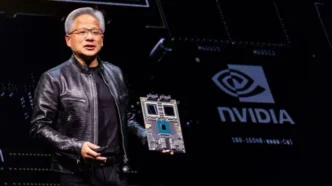Trend Micro has raised concerns about Nvidia’s recent patch for a critical vulnerability in its Container Toolkit, warning that the fix remains incomplete. The security flaw, tracked as CVE-2024-0132, was originally addressed in September 2023. However, new research suggests that the mitigation still leaves enterprises exposed to container escape and privilege escalation attacks, posing significant risks for companies relying on Nvidia GPUs in AI and cloud environments.
The Core of the Problem: An Incomplete Patch
According to Trend Micro’s advisory, the vulnerability stems from a time-of-check to time-of-use (TOCTOU) race condition. Essentially, there’s a gap between the system verifying a container’s access to the host file system and when that access is executed. This window creates an opportunity for an attacker to perform unauthorized actions, effectively breaching the container’s isolation and accessing host resources.
Nvidia’s initial patch aimed to close this gap, but Trend Micro found that the fix failed to enforce strict timing checks, which could allow malicious containers to inject commands or manipulate host-level files.
“Successful exploitation could lead to unauthorized access to sensitive host data, theft of proprietary AI models or intellectual property, severe operational disruptions, and prolonged downtime,” Trend Micro warned.
Who Is Affected?
Organizations using Nvidia Container Toolkit or Docker in AI workloads, cloud computing, or containerized infrastructure are at the highest risk—particularly those that rely on default configurations or features introduced in recent versions of the toolkit.
Trend Micro confirmed that:
- Versions up to 1.17.3 of the Nvidia Container Toolkit are vulnerable by default.
- Version 1.17.4 is only vulnerable if the
allow-cuda-compat-libs-from-containerfeature is enabled.
These findings highlight the importance of reviewing configuration settings and applying security best practices to avoid unintentional exposure.
Additional DoS Threat Discovered
Alongside the container escape issue, Trend Micro also discovered a denial-of-service (DoS) vulnerability in Docker on Linux. When containers are configured with multiple mounts using bind-propagation (especially with the shared flag), the Linux mount table can grow unchecked. This can result in:
- Exhaustion of file descriptors
- Failed container creation
- Inaccessibility via SSH
Such a scenario could lead to severe disruptions in container orchestration and limited access to critical infrastructure.
Mitigation Recommendations
To reduce risk, Trend Micro advises enterprises to take the following actions:
- Limit Docker API access to authorized users only
- Avoid root-level privileges unless absolutely necessary
- Disable optional features in the Nvidia Container Toolkit that aren’t essential to operations
- Regularly audit container configurations for excessive permissions or vulnerabilities
Widespread Impact Across AI Workloads
According to cloud security company Wiz, more than 35% of cloud environments using Nvidia GPUs may be vulnerable. Given the dominance of Nvidia’s GPU solutions in both on-premises and cloud-based AI operations, the scale of potential exploitation is vast.
The vulnerability allows attackers not only to break out of containers but also to take control of the host system, making it one of the more severe threats to container security seen in recent years.











